March Blog 2024
Challenging the More and Most able
In reading around the topic of More and Most Able (MMA) the theme of challenge recurs often.
“More able pupils in general welcome challenge and often like to take a lead in shaping their own learning”. (Cullen, Cullen, Dytham et al, 2018).
This document will look at how challenge can be provided for MMA students through different forms of scaffolding regarding key ideas on:
- Task design and differentiation
- Live Marking and Feedback
Task Design and Differentiation
One useful and popular form of scaffolding is a written resource: e.g. writing frames, sentence starters, single paragraph outline structures, checklists, vocabulary lists, and glossaries.
Single Paragraph Outline
Here is an excellent example of how an SPO can be differentiated for more and most able students.
The questions and prompts are challenging and probing, asking the student to provide and explain their evidence, including using key vocabulary and quotes. The subject-specific vocabulary is used confidently and is extensive. The SPO then acts as a checklist for content.
The feedback also ensures the students include key points in their plan, which allows for a well written final answer.
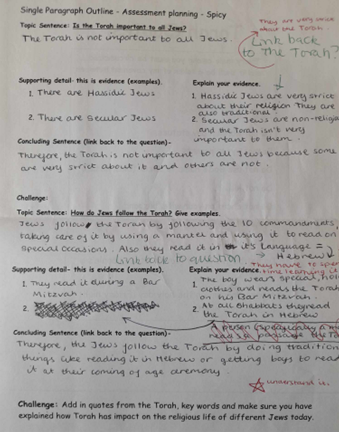
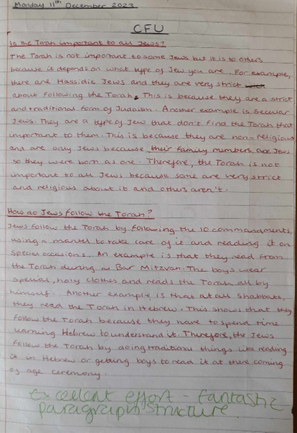
Writing Frames
This next example from Geography shows how a task has been scaffolded with a writing frame to support an SEN student in assessing the hypothesis.
The open format of the MMA student’s work has challenged them to write the hypothesis review in full, together with using full sentences and subject specific vocabulary, thereby allowing them to consolidate these skills. The differentiation is clear.
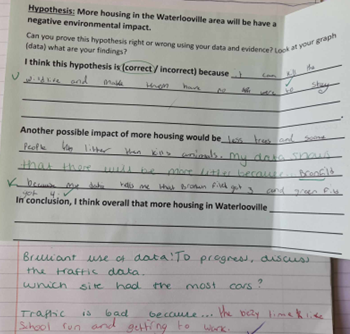
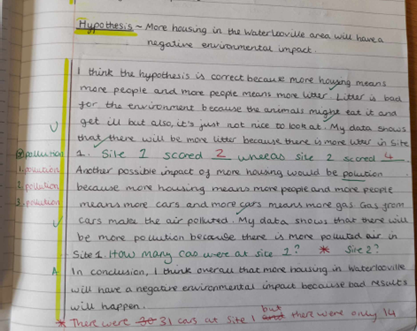
Vocabulary
Vocabulary is key to comprehending and following a lesson. It should be introduced carefully to ensure understanding. It is also vital in expressing ideas and thoughts. Research has shown that explicitly teaching vocabulary increases the understanding and use of that vocabulary by students.
In addition to the Tier 2 vocabulary highlighted by Katy in her blog, it is important to teach subject-specific vocabulary. Explicit teaching may include the use of word lists and glossaries. It should also include students reading and analysing “The Big Question” and all keywords within it.
Students must understand the meaning of keywords, as well as examples of context. The MMA students should be given words that challenge them and allow them to express their knowledge in increasingly sophisticated ways.
Summarising
This work is an example from an MMA student in a KS3 RS lesson. The student was given extension work; to summarise key information from a short piece of text.
Research has shown that summarising information is an effective and simple way to add challenge in the classroom, requiring a range of cognitive processes from selecting, organising, and integrating information.
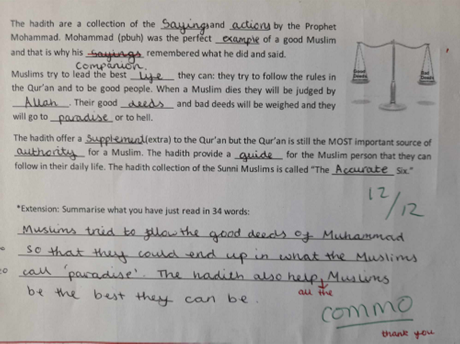
Live marking and Feedback
Live marking allows for immediate feedback and identification of misconceptions which can be addressed within the lesson. It allows us to identify students who require more support and also those who have understood the main content and require stretch and challenge.
An excellent example from Maths shows how live feedback has been used to support a SEN student and challenge a MMA student.
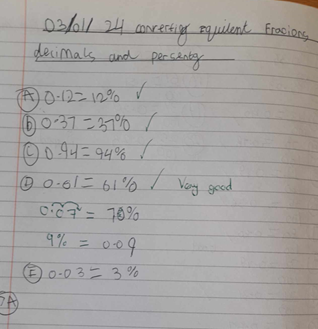
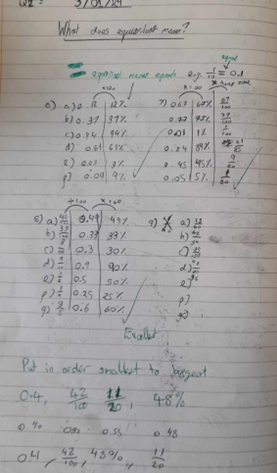
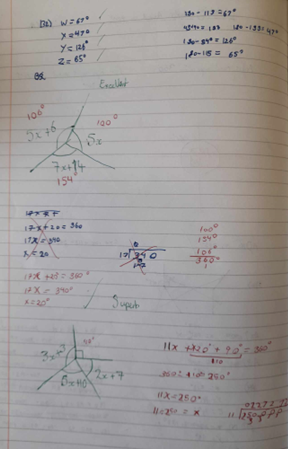
Feedback is one of the most powerful techniques regarding students' outcomes and can be differentiated to support or challenge students. Below is an example of feedback from a piece of work in history given to a Year 7 SEN and MMA student where feedback questions have been carefully considered, allowing for greater depth and response for the MMA student.
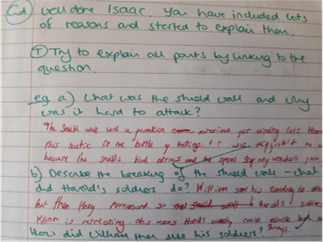
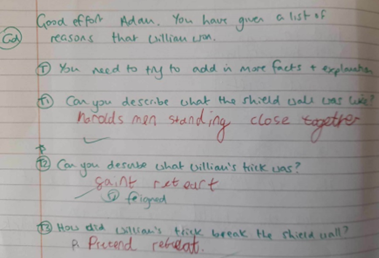
An example from an English lesson shows how the question of ‘why’ can be used to stretch students. As well as the probing question why, which demands a considered response; the student must elaborate and therefore make connections with prior learning. This helps embed the knowledge and encourages critical thinking.
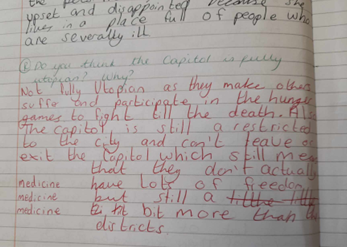
In this blog we have highlighted many different ways to construct and adapt planning or feedback to stretch the high attainers. We must get the level of challenge right for them, especially in our mixed-attaining classrooms.
